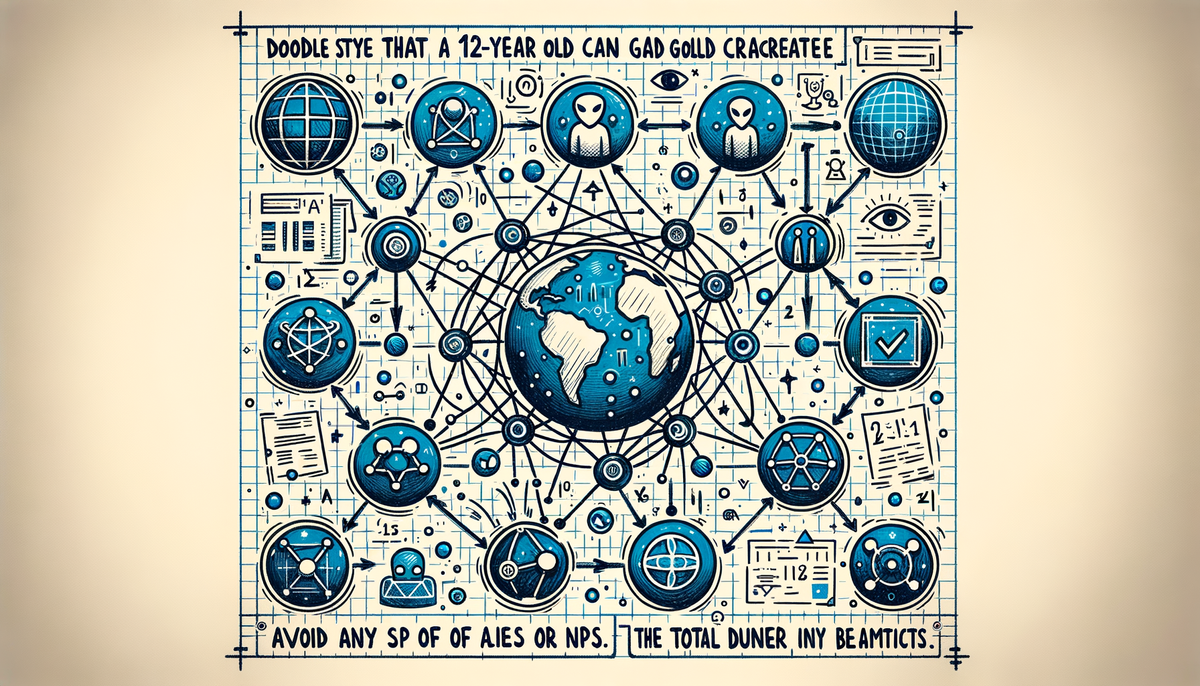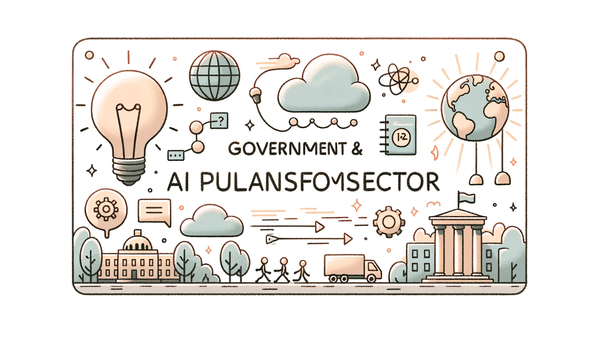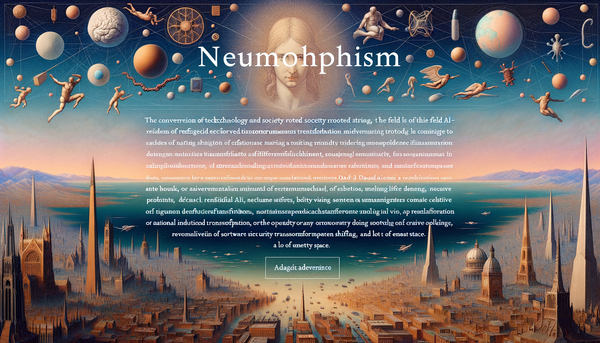Scrunch AI: Standing Out in the AI Search Landscape

Delivering equitable healthcare information through AI agents and revolutionizing public services with conversational digital tools illustrate how technological evolution not only enhances our daily experiences but also raises critical questions on performance, scalability, and user engagement.
Bridging the Healthcare Gap with AI Agents
Imagine a world where accessing vital healthcare information is as simple as interacting with a knowledgeable friend. Ushur’s launch of an AI agent for member services is making this vision a reality. By leveraging natural language processing and machine learning, this technology helps streamline the complex process of accessing healthcare details. Instead of navigating endless webpages or waiting on busy phone lines, patients can now receive tailored assistance instantly. This innovation not only accelerates access but also promotes more equitable healthcare—a goal that has long eluded many traditional systems.
The integration of AI in healthcare is not merely a matter of convenience; it is a transformative approach that can reduce systemic disparities. By automating routine tasks and enabling faster response times, AI agents are poised to play a critical role in rural and under-resourced areas. Moreover, this technology shines a light on the broader impact of digital transformation within the healthcare ecosystem, fostering greater inclusion and efficiency.
On a broader scale, such developments underscore a promising trend: over the last decade, various industries have adopted AI with an eye towards solving longstanding inefficiencies. In fact,
John McCarthy once defined AI as “the science of making machines do things that would require intelligence if done by men.”
Today, this definition is not only alive but is actively pushing boundaries in how we manage fundamental services like healthcare.
Conversational AI in Public Service and Education
An innovative leap in public service training is unfolding as university students embark on studying Truleo’s conversational AI for police reporting and policy training. This emerging application elevates how law enforcement personnel interact with digital systems for record-keeping and decision-support. By simulating real-life scenarios using conversational AI, trainees can develop a nuanced understanding of report filing and policy analysis without real-world consequences.
This approach paves the way for far more dynamic and interactive training sessions. Traditional methods of policy training often centered on rote learning and static textbook exercises. However, integrating conversational AI introduces a hands-on learning process that is adaptable, responsive, and engaging. The enhanced training can also help police departments refine operational procedures and guard against potential administrative errors.
Moreover, by empowering students with tools originally designed for operational use in police work, academia and law enforcement simultaneously benefit. This collaboration accelerates technology integration into public services, infusing both sectors with fresh insights that have long-term practical applications. Increase in accuracy and efficiency in police reporting can have ripple effects, leading to elevated public trust and better community relationships.
The Hardware Driving the AI Revolution: A Closer Look at Graphics Innovations
Among the technologies propelling this digital revolution, the role of advanced hardware cannot be understated. The recent announcements concerning the NVIDIA GeForce RTX 5070 offer a window into the delicate balance of performance, efficiency, and market expectations. Two distinct reviews have shed light on the card’s capabilities—one noting that its enhancements were largely modest compared to the already impressive RTX 4070 Ti, and the other underlining that it falls short of delivering consistent high-end performance, particularly in 4K settings without DLSS acceleration.
The RTX 5070, priced at $549 and equipped with 6,144 CUDA cores along with 12GB of GDDR7 memory, was introduced as a potential upgrade for gamers and professionals alike. In scenarios demanding 1440p resolutions, the card has held its ground, comfortably crossing the 60 fps threshold in 4K when assisted by technologies such as DLSS 4. However, the realities of performance are nuanced. Without DLSS, the card struggles, generating a mere 15 fps in 4K—a performance gap that resonates strongly with enthusiasts who demand robust, raw horsepower for the next generation of gaming.
This divergence in performance expectations becomes even more pronounced when comparing the RTX 5070 against its powerful variant, the 5070 Ti. The latter, boasting 8,960 cores and a heftier 16GB of VRAM, reveals the incremental nature of innovation. What we witness here is an industry at a crossroads, where pushing the envelope sometimes means making just enough improvements to satisfy upgrade cycles but falls short of significant leaps in capability.
This dichotomy brings a hint of historical context into view. As early computing saw transformative leaps every decade, today's semiconductor industry often wrestles with incremental changes—a scenario that evokes the sentiment famously expressed by Elon Musk: "The pace of progress in artificial intelligence is incredibly fast." Yet, even within such fast-paced progress, the pacing remains cautious. Comparing these GPUs not only helps consumers understand market trends but also underscores the ongoing challenges in balancing cost with performance in advanced, AI-driven applications.
Deciphering the Role of AI in Search and Data Infrastructure
Turning our attention to business applications, the realm of AI-powered search and data integration has witnessed a remarkable transformation. Start-ups and established companies alike are harnessing AI to redefine how information is retrieved and managed. For instance, Scrunch AI is helping companies stand out in AI search by driving innovations that enable users to locate relevant information faster and more intuitively. This evolution in search technology is not only a testament to rapid advancements in natural language processing but also a reflection of growing market demands for precision and personalization.
Meanwhile, initiatives like Penguin Solutions’ revamped software are carving pathways for automated mass-scale AI infrastructure deployments. Such tools are essential in modern enterprises where managing vast amounts of data is becoming increasingly complex. Automation in deploying AI infrastructure ensures scalability, reduces manual errors, and accelerates the time-to-decision for businesses globally.
Additionally, Nexla’s enhancement of its integration platform with agentic AI, no-code pipelines, and a data marketplace further solidifies the role of AI in bridging multiple business functionalities. Solutions like these demonstrate that the future of enterprise technology lies at the intersection of sophisticated AI mechanisms and user-friendly designs. Enterprise platforms are now more streamlined, allowing business analysts and decision-makers to focus on deriving insights rather than wrestling with the intricacies of data processing. To learn more about these exciting integrations, you can explore our in-depth discussion on the Nexla integration platform and its groundbreaking approach.
What these developments have in common is a drive toward eliminating the friction traditionally associated with data management and enterprise search. By automating these systems with AI, companies can pivot to more strategic tasks, proving that embracing digital transformation is a vital step toward competing in today’s global market.
Crossroads of Technology and Market Dynamics
The diverse applications of AI—from healthcare and public safety to gaming and enterprise integration—underscore an important truth; that while the technology is undeniably transformative, its evolution is complex and multi-faceted. Manufacturing the next generation of graphical processing units that power many AI-driven applications underlines the intrinsic link between hardware capacity and innovative software. Advanced graphics cards like the RTX 5070 have become a microcosm for this balancing act, where improvements, though sometimes incremental, collectively drive the industry forward.
Consumers stand at the crossroads of next-generation hardware and the promise of powerful AI-driven experiences. Yet, as illustrated by recent reviews, the appeal of new GPU models is often tempered by real-world performance challenges. This dynamic is encapsulated in the discussion around NVIDIA’s RTX 5070. Its lukewarm performance without DLSS and competition from rivals such as AMD’s Radeon 9070 illustrate the constant tug-of-war between marketing expectations and tangible user outcomes. It reminds us that true innovation is not measured merely by release cycles, but by the meaningful improvements in how we experience technology.
In the realm of business and technology, aligning software capabilities with powerful hardware creates a synergy that is essential for future growth. As companies push the envelope on AI-driven search, data integration, and user engagement, the demand for high-performance computing units remains paramount. This interplay of hardware and software continues to shape our digital future, reinforcing the notion that every incremental advancement counts toward the larger goal of a seamlessly integrated technological ecosystem.
The Broad Implications of AI Adoption
What ties together the wide-ranging topics discussed here is the profound impact of AI on both daily life and complex industrial operations. Literary historian Harold Bloom once mused about the transformative power of new ideas; in a similar vein, the rapid evolution of AI technologies is reshaping how we interact with the world. When an AI agent in healthcare instantaneously provides critical medical information, or when conversational AI refines training in public institutions, the positive societal repercussions are palpable.
Furthermore, as these applications gain traction, we are compelled to consider the broader societal implications. AI is not just a tool for enhancing efficiency; it is an enabler of new paradigms in how we structure our day-to-day operations. Whether it’s automating thousands of processes with platforms like Penguin Solutions’ or streamlining data integration with Nexla’s latest upgrades, the technology removes barriers and fosters innovation in environments that once appeared stagnant and siloed.
Indeed, AI is setting the stage for a future where technology not only responds to human needs but anticipates them. Reflecting on a past era when industrial shifts were marked by dramatic, visible changes, today's AI advancements feel more like a steady progression. Yet, each of these incremental improvements builds a foundation for more radical transformations ahead. As one study noted, improvements in AI search interfaces and conversational tools have the potential to spark larger shifts in how governments, companies, and educational institutions operate daily.
These multifaceted advancements illustrate that the journey of digital transformation is not merely about cost savings or efficiency gains—it’s about redefining the human experience with technology. And as we navigate these rapidly changing times, it’s essential to acknowledge that every application, from healthcare to public safety and enterprise systems, plays a crucial role in constructing the digital world of tomorrow.
Anecdotes, Insights, and Future Directions
I recall attending a conference several years ago where the promise of AI was wrapped in grand visions of robot companions and utopian futures. Today, however, the narrative is far more grounded and practical. We see AI actively solving problems in healthcare by reducing waiting times and democratizing access to information. Simultaneously, conversational AI is revolutionizing training modules in sectors as crucial as public safety. This dual impact—transforming both individual lives and large-scale organizational processes—accentuates the versatility of AI technologies.
One anecdote that resonates is the story of a small clinic in a remote town that integrated an AI-driven chat system to help patients schedule appointments and retrieve healthcare advice. What began as a simple deployment quickly turned into a lifeline for many, demonstrating how even modest AI implementations can have outsized benefits. Similarly, in law enforcement training, the use of conversational AI has led to more interactive and responsive simulations, enabling officers to handle sensitive situations with increased confidence and clarity.
Looking forward, it is clear that the roadmap for AI is as much about addressing current limitations as it is about exploring new frontiers. While hardware innovations like those in NVIDIA’s latest GPU lineup continue to push performance boundaries, the real magic lies in integrating these capabilities into systems that understand, predict, and respond to human needs. The future will undoubtedly see further convergence between robust hardware and adaptive software solutions that merge efficiency with empathy.
As we consider these trends, it is worth pondering how continued investments in research and development—not to mention user feedback—can drive these improvements even further. Just as innovation in AI search and data integration has enhanced our ability to retrieve and analyze information, breakthroughs in hardware performance will empower developers to create richer, more immersive experiences. The merger of these strengths will likely characterize the next phase of digital evolution.
Further Readings
For more detailed reviews and industry insights, readers might appreciate several resources: the Engadget review of the NVIDIA GeForce RTX 5070 provides a technical deep dive into the graphics card's performance nuances, while Ars Technica’s analysis offers a contrasting perspective on its real-world viability.
Additionally, explore our comprehensive coverage on integration platforms and intelligent solutions at AI.Biz:




